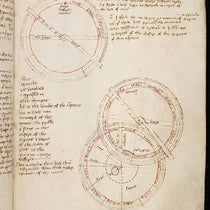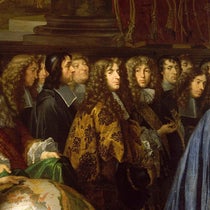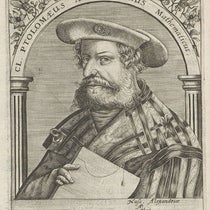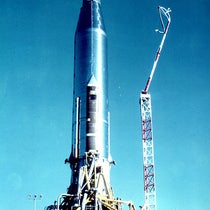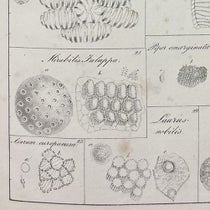Scientist of the Day - Lars Fredrik Nilson
Lars Fredrik Nilson, a Swedish chemist, died May 14, 1899, just shy of his 59th birthday. Nilson was professor of chemistry at Uppsala, later specializing in agricultural chemistry. Nilson introduced sugar beets into Sweden and did much to turn swamps and fens into arable land through chemical treatment.
But in the mid 1870s, new to his professorship, he was interested in what chemists call rare earths, which are soft heavy silvery metals that occur as oxides; they are hard to tell apart, and difficult to separate chemically from one another. Yttrium was one of the first rare earths identified, followed by cerium and lanthanum. There are now 17 known rare earths, and in a modern periodic table most are grouped together and called the lanthanides. Curiously, nearly all were discovered in Swedish ores by Swedish chemists, which is why Nilson was looking for new ones, in an ore called euxenite. In 1879, he was successful, identifying an oxide he called scandia, containing a new rare earth, scandium, which he named after his mother country (first image).
The discovery of scandium turned out to be more significant than the typical rare-earth discovery. In 1869, Dmitri Mendeleev had published the first version of his periodic table, which provided a sensible arrangement of most of the known elements, but which had some holes – places for elements with certain predictable properties and atomic weights, but which were unknown to chemists. Three of these were especially notable, occurring in the heart of his table. One was right below boron, one below aluminum, and one below silicon. Mendeleev gave them names: eka-boron, eka-aluminum, and eka-silicon, marked them in the printed tables with either a ? or a dash, depending on the version, along with a predicted atomic weight. Mendeleev thought (correctly) that, if and when these elements were discovered, they would lend further credence to the validity of his periodic table.
In 1875, a French chemist named Paul Émile Lecoq de Boisbaudran discovered a new element with an atomic weight of 68, which would put it right where Mendeleev inserted a placeholder for his eka-aluminum. He called it gallium, after France. We have written a post on Lecoq de Boisbaudran.
Nilson had never heard of Mendeleev or his periodic table, so he did not make the connection with Mendeleev's eka-boron, but scandium belonged right there, with an atomic weight of 44, very close to Mendeleev's predicted value. Nilson was fortunate that his discovery was a rare earth but not one of the lanthanides, which occupy a more confusing part of the periodic table. The identification with eka-boron was made by another Swedish chemist, Per Teodor Cleve.
We have three original versions of Mendeleev's periodic table, published in 1869, 1871, and 1877. We show details of two of them. It is not difficult to find the "B" for boron at top center and the dash or question mark below it, with the predicted atomic weight of 44. Interestingly, the table for 1871 has “_=68” below Al (Aluminum), representing Mendeleev’s eka-aluminum (third image). In the 1877 table, that has been replaced by “Ga 68”, the newly discovered gallium (fourth image). Since the 1877 table, found in Mendeleev’s textbook, is rarely reproduced, we include it here as well (fifth image). You may see the complete 1869 and 1871 tables at our post on Mendeleev.
The third of Mendeleev’s predicted elements, eka-silicon, would be discovered in 1886 by Clemens Winkler and named, after his country, germanium. That is a story for another day.
William B. Ashworth, Jr., Consultant for the History of Science, Linda Hall Library and Associate Professor emeritus, Department of History, University of Missouri-Kansas City. Comments or corrections are welcome; please direct to ashworthw@umkc.edu.

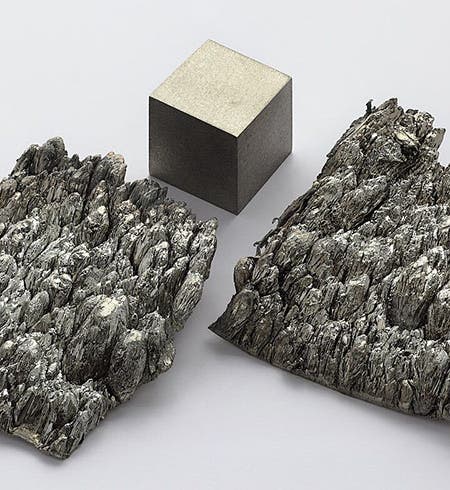


![Detail of Mendeleev’s periodic table of 1871, with B for boron at top center, and a space below it occupied by “_=44”, or eka-boron, eventually to be replaced by scandium, [Journal of the Russian Physical-Chemical Society], vol. 3, p. 31, 1871 (Linda Hall Library)](https://assets-us-01.kc-usercontent.com:443/9dd25524-761a-000d-d79f-86a5086d4774/3c198272-ce3c-4207-814a-d989c6547a92/nilson3.jpg?w=800&h=538&auto=format&q=75&fit=crop)
![Detail of Mendeleev’s periodic table of 1877, with B for boron at top center, and directly below it, “? 44” or eka-boron, soon to be replaced by scandium, Основы химіи [Principles of Chemistry], by Dmitri Mendeleev, p. XII, 1877 (Linda Hall Library)](https://assets-us-01.kc-usercontent.com:443/9dd25524-761a-000d-d79f-86a5086d4774/0d4a0f51-25ab-4050-9628-97fa278f9cea/nilson4.jpg?w=777&h=600&auto=format&q=75&fit=crop)
![The entire Mendeleev periodic table of 1877, Основы химіи [Principles of Chemistry], by Dmitri Mendeleev, p. XII, 1877 (Linda Hall Library)](https://assets-us-01.kc-usercontent.com:443/9dd25524-761a-000d-d79f-86a5086d4774/5bb4eaf8-4026-46b6-9b4c-337c2ff295af/nilson5.jpg?w=800&h=549&auto=format&q=75&fit=crop)
